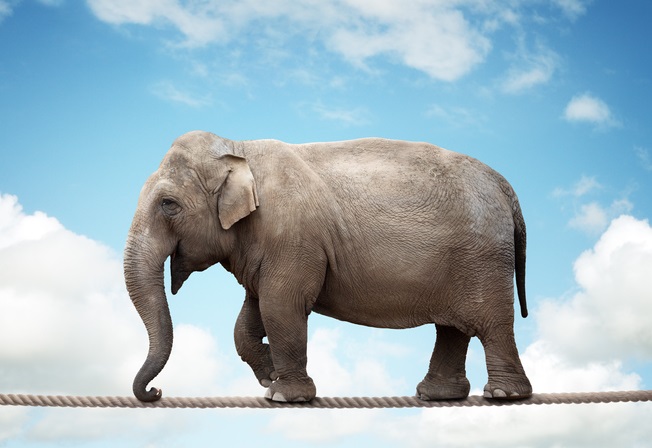Abstract
This paper explores the key difference between Dhyāna and mindfulness. Most of the current published research focuses on how high performers (heads of organisations such as CEOs) benefit from just twenty minutes of mindfulness practice. The contemporary context of the practice of mindfulness and meditation is primarily rooted in stress reduction as its main objective. This is evident in the work of Dr. Herbert Benson (Harvard Medical School and the Benson-Henry Institute of Mind-Body Medicine, Massachusetts General Hospital), on the relaxation response and Jon Kabat-Zinn’s mindfulness.
The paper terms this process “Allopathic mindfulness” and contrasts it with the yogic Dhyāna. This productisation of ‘mindfulness’ views it as the ‘active ingredient’ extracted from a traditional herb and then patented and synthesized in a factory.
The authors also contrast Dhyāna as explicated in the Śri Kṛṣṇamācārya tradition of Yoga with the use of the practice of “meditation” as an escape in the pursuit of “supreme bliss.” The paper explores the key sūtras of the Yoga-Sūtra (Chapter I and II) as interpreted in the Śri Kṛṣṇamācārya tradition to explore and internalise the idea of Dhyāna that does not get entrapped and lost between these two polarities.
The paper then goes on to explain the concept of Dhyāna as a process of deep enquiry. It is not mere repetition of any word (such as ‘Coca-Cola’ as suggested by Dr. Herbert Benson) but paying attention to what one is yoking with. Dhyāna, therefore, is a process of creating an ‘And’ (yoking) rather than an ‘Or’ (a laissez -faire approach that holds that any word is OK for repetition). The mere cutting off the external stimuli is similar to creating a bubble and isolating oneself from disturbing stimuli is just a preliminary step. If this does not seamlessly move into an inward turning and a grounding in a deeper self-enquiry, with the possibility of discovering the transcendent Self, then it cannot be termed Dhyāna.
Dhyāna is not Mindfulness
A worrying trend: Presentation of ‘Mindfulness’ as a pill
(Figure 1: Credit: iStock – Allopathic mindfulness, a travesty of modern times)
‘Mindfulness’ seems to be the latest fad in leadership and management. The considerable body of published research[1][2] focuses on how organisation leaders (CEOs) benefit from just twenty minutes of mindfulness practice.
One of the most delightful taxi rides the principal author of this paper has ever had was one in which the taxi driver was calmness personified as he drove through chaotic traffic snarls. It turned out that he was a regular meditator.
“You have to handle this every day for long hours,” the principal author said, commenting on his attitude. A very interesting discussion ensued between them on how important it is for a person to go back home after a difficult day’s work in a state of mind where he can smile at his wife and play with his children.
“Yoga and Dhyāna are indispensable for me,” was the driver’s final statement.
He practiced prāṇāyāma to prepare himself for the rigours of the day. Besides as soon as he finished his workday, he kept repeating a japa whenever we stopped at traffic lights.
It is delightfully encouraging that an ancient Indian practice is getting the attention it deserves.
The authors of this paper have certainly not even an iota of doubt that all the research done by Jon Kabat-Zinn and others on Buddhist meditators from the circle of the Dalai Lama’s senior monks is excellent. However, as practitioners of Dhyāna, they are concerned by populist notions of Dhyāna that have been mainstreamed.
First, is a presentation of ‘mindfulness’ as if it is ‘the active ingredient’ of the ancient practice of aṣtāṅga yoga. This reminds one of the way pharmaceutical companies study many traditional healing practices and preparations and analyses the herbs used to extract the ‘one’ chemical that is the essential curative element. This chemical is then patented, synthesised in a factory, and the promising future then belongs to that company’s top line.
When one looks at ‘Dhyāna’, the original practices that were studied, one discovers that they are part of a holistic set of practices that include internal discipline and ethical behaviour. They are embedded in a worldview that values all of creation as sacred. The contemporary notion of ‘Mindfulness’ is increasingly beginning to sound like a pill that has been distilled out of the original messy mix. On the contrary, the Buddhist and Yogic thought from which mindfulness is ‘extracted’ are grounded in profound respect for one’s environment and a way of life that is dhārmik.
Dhyāna as part of a sādhana
Dhyāna is one of the ‘eight limbs’ of Yogic Sādhana – a lifelong practice that aims at deep inner transformation. These limbs are accepted by all Indic spiritual teachings. The worldview that characterises both Yogic and Buddhist thought, for example, make attentiveness, contemplation and meditation a central practice of a life that is directed towards spiritual attainment. Householders, kings, monks and people from all walks of life who valued the spiritual path, practiced a form of meditation that was meaningful to them.
Dhyāna is not a ‘detachable fragment’. It has been recognised that when the ‘active agents’ are separated from the holistic herbal preparations, there are ‘side effects’ that the whole herb does not create. Often, the herb is part of a dietary regimen and is in itself an integral part of a holistic treatment. One wonders what the side effects would be of practicing, albeit swallowing the ‘mindfulness pill’.
Second, the idea that a human being is an integral part of Nature is central to the worldview and way of life from which the contemplative practices have emerged and evolved. What happens when this idea is uprooted from its nutrient medium and placed, often sold, as a tool for effectiveness?
Dhyāna is a practice that ought to lead to the development of ecologically sensitive and sustainable ways of engaging with science and technology. Mindfulness, as it is promoted, will make many executives who do not wish to ask the difficult questions regarding their motivations, the impact of their business on the environment, on equity and other related factors more ‘effective’. This is because these practices that definitely make one’s mind sharper and more retentive are placed in a context that values ‘utilitarianism’ as its defining characteristic.
Third, ‘Mindfulness’ is presented almost as if it is a modern discovery. If one browses the Wikipedia (popularly regarded as the arbiter of truth) one comes across this line: “A famous exercise, introduced by Kabat-Zinn in his MBSR-program[3], is the mindful tasting of a raisin, in which a raisin is being tasted and eaten mindfully”. Interestingly, Kabat-Zinn, who was significantly influenced by Buddhist philosophy and practices, rejected the label of “Buddhist” and averred that he preferred to locate mindfulness within a “scientific rather than a religious framework.”
Thich Nhat Hanh[4], the well-known Vietnamese monk and spiritual teacher, has often written about mindfulness in everyday life activities from the mundane to the profound.
Mindful eating and the psychological correlates of the ‘six rasa’ is part of Ayurvedic tradition. Many such simple practices set in the everyday mundane routines of living are recommended dhāraṇā (contemplative) practices that our teacher Yogācārya Kṛṣṇamācārya would mention casually. While serious researchers may not be part of this ‘cultural appropriation,’ we nevertheless run the risk of a practice that has profound possibilities of becoming a pill for an ill—just like most of Yoga has been plucked out of its context, innovated, and perhaps more accurately, distorted beyond recognition in the name of making it accessible (or more commercially viable).
Root meaning of the word ‘Mediation’
Meditation’ as it is currently taught and practised does not equate with Dhyāna. The two words that are commonly used use are meditation and contemplation that can etymologically be traced to their original roots in Greek and Latin.
Meditation, the Latin word for ‘ponder’ comes from the root ‘meditari‘ which means to reflect upon. J. Krishnamurti has often mentioned this in his talks and writings. The word ‘meditation’ also means to measure. Therefore, meditation implies getting a true measure of oneself and the world around.
The word contemplation is derived from Latin ‘contemplato’, ultimately from the Latin word ‘templum’, a piece of ground consecrated for the building of a place of worship. The word ‘Contemplation’ comes from the word temple, which means a space in which to observe. So, contemplation is a space in which to observe oneself.
The origins of Mindfulness Research[5]
Currently, what is generally referred to as meditation, especially in western discourse, emerges from the work of Dr. Herbert Benson (The Relaxation Response[6]). Dr. Benson, a professor from the Harvard Medical School, coined the term ‘relaxation response’ and wrote the eponymous book as a scientific term for meditation.In addition, he used it to describe the ability of the body to stimulate relaxation of the muscle and organs.
Although Dr. Benson’s research did not specifically focus on mindfulness as a meditative practice, nevertheless his work, the first scientific study of any form of meditation, laid the groundwork for future interest and research in mindfulness as a clinically effective intervention. His work therefore paved the way for the interest in mindfulness that was to soon follow. Dr. Benson used Transcendental Meditation (TM) as the basis for developing his relaxation response method which he created as a secular version of the TM technique with the goal of achieving the relaxation response that TM triggers.[7] TM was brought to the West in the mid-twentieth century by Maharishi Mahesh Yogi, the well-known Indian spiritual Guru. TM has been widely credited with being the first form of meditation to be practiced on a mass scale in the West.
After conducting these initial studies, Dr. Benson concluded, “It made no sense to say that TM was the only way to evoke this quieting response. So, I looked for the basic steps that made up Transcendental Meditation. Ultimately, I felt there were two: Step one was repetition, of a sound, a word, a prayer, a phrase, or a muscular activity. The second step was that when thoughts came to mind, you tacitly disregarded them and returned to the repetition. When I looked for these two steps in the religious and secular literatures of the world, I was astounded to find that in every single culture of humans [ sic ] that had a written history, these two steps were described.”[8]
(Figure 2: Credit: iStock – Origin of mindfulness research)
Instead of using Saṃskṛtam or other religious words as is done in TM and other religious practices, he had research participants use “neutral” words like “one” and even Coca-Cola. This approach allows those who are not religious, or whose beliefs may conflict with the teachings connected to a particular meditation system, to nonetheless participate fully in this mind-body activity. Benson theorises that each of the multitude of meditation techniques have the final common pathway leading to the relaxation response.
An additional benefit has been observed by Dr. Benson. While using his spiritually sanitised version of an unanticipated finding that emerged surprised even him. “Not only did my research — and that of my colleagues — reveal that 25 percent of people feel more spiritual as the result of the Relaxation Response, but it showed that those same people have fewer medical symptoms than those who reported no increase in spirituality. It became clear that a person’s religious convictions or life philosophy enhanced the average effects of the Relaxation Response in three ways: (1) People who chose an appropriate focus, that which drew upon their deepest philosophic or religious convictions, were more apt to adhere to the Relaxation Response routine, looking forward to it and enjoying it; (2) Affirmative beliefs of any kind brought forth remembered wellness, reviving top down, nerve cell firing patterns in the brain that were associated with wellness; (3) When present, faith in an eternal or life transcending force seemed to make the fullest use of remembered wellness because it is a supremely soothing belief, disconnecting unhealthy logic and worries.”[9]
Dr Benson nevertheless concluded that whether one says Coca-Cola, or one of these words, it doesn’t matter because it creates the same effects. This, however, is a very superficial and simplistic understanding of a nuanced and deeply layered process. Because if one is constantly being stressed, and one does something that just cuts off the stresses, for ten or fifteen minutes, all these parameters are likely to change. So, if one takes that same 15-20 minutes to walk in the forest, that same 15-20 minutes to listen to music that is really quietening and so on, the same effects are likely to occur.
Dhyāna based on theYoga-Sūtra (Śrī Kṛṣṇamācārya tradition)[10]
(Figure 3: Credit: iStock – Dhyana based on Yoga-sūtra; Śri Kṛṣṇamācārya tradition)
Dhyāna in the Yoga-Sūtra is infinitely deeper than the simplistic conclusions drawn by Dr. Benson that have only trivialised and distorted the issue. According to Kṛṣṇamācārya, there are three mandatory steps before one really understands or enters the space of Dhyāna.
The first step is through the practice of yama-niyama. One cuts off the context which is causing duḥkha and hence stressful.
The second step is when one really discovers pratyāhāra which means, that there is a certain inner urge towards externality. Therefore, one feels the cycle of going out, getting stressed and so on. This movement is necessary for livelihood but we overlay it with all kinds of other cravings and compulsions. So, pratyāhāra is the process of pulling back and not feeding into this cycle of compulsive consumption. Śrī Kṛṣṇamācārya focuses on these practices as the essential prerequisites for Dhyāna. Śrī Kṛṣṇamācārya defines āsana and prāṇāyāma as the practice of attentiveness to the processes of the body, the processes of breath and the processes of emotion. One touches the deeper motivations of reinforcing one’s sense of self and one is therefore able to reverse the process by which one reinforces one’s ego.
The third step is, now that one has gathered one’s prāṇik energy, one directs it to something inspiring and elevating. This is called dhāraṇā. Once one has decided where one’s attention should be directed, there is nothing more for one to do except stay with the process. So, one cannot do meditation. If one stays with dhāraṇā, it automatically deepens into something called Dhyāna.
There is a very clear analogy that describes this process. Dhāraṇā is like the process of pouring oil into a cup. The oil is one’s prāṇik energy and the cup represents the object one is focusing on. During dhāraṇā the oil is being poured drop by drop, the flow is intermittent. Dhyāna is when this flow becomes continuous and streamlined, it becomes a dhārā. Samādhi is when there is only the flow, there is no sense of self, there is no sense of the cup, one is completely attuned or one with the flow and the object. One can now compare this process with what is generally called meditation and draw one’s own conclusions.
The process of enquiry into an object
The Yoga-Sutra of Patañjali explicates the manifestation of Prakṛti:
prakāśa-kriyā-sthiti-śīlaṁ bhūta-indriya-ātmakaṁ bhoga-apavarga-arthaṁ dṛśyam(YS 2.18)
The seer perceives through the senses and the mind. The characteristic of the objects of perception and the instrument of perception is composed of luminosity, movement and heaviness. The process of engagement can either be compulsive and consuming or learning and insightful.
viśeṣa-aviśeṣa-liṅgamātra-aliṅgāni guṇa-parvāṇi(YS 2.19)
The unfolding of the guṇa is in stages. They are distinct, not distinct, discoverable, and non discoverable.
These two sūtras (and the commentaries on them) state clearly that the world of objects and the phenomena that one experiences as the external space as well as one’s senses and the psyche (that are experiences of the inner space) are composed of the same matter. They are stages of manifestation of Prakṛti. The gross external world is grasped by the well-formed senses. However, the gross manifestation is a stage-wise unfolding of very subtle matter. At the subtle levels, the distinctions between inner and outer disappear.
This explication of the Yogic cosmos (that is derived from Saṅkhya philosophy) must be kept in mind when we engage with Dhyāna. In the sūtra in the first chapter, Patañjali defines the process of deep attentiveness thus: “Viṣayavatī vā pravṛttirutpannā manasaḥ sthitinibandhanī” (YS 1.35). When one starts paying attention to any object, one touches the externalities of the object. And then, as one keeps paying attention, one’s mind becomes more subtle, and one is able to touch the subtler aspects of the object. So, the process of dhāraṇā, dhyāna and samādhi must be understood as the melting away of all the apparent separation between the object and oneself, the observer.
Therefore, as one becomes more and more subtle, one also gets in touch with the subtler and subtler aspects of the object that one has chosen to pay attention. There are many implications here. However, the most important aspect is that the quality of the object one chooses for dhāraṅā impacts the mind profoundly. Yoga Śāstra warns the novice that the objects must be chosen with care. Most people are not aware that the sculptures that are recommended as objects to fix one’s attention upon are beautified forms of sacred geometry. Śrī Gaṇapati Sthapati, the iconic Vāstu-Śastra exponent, describes this in detail in the documentary “Vāstu Marabu– The Living Tradition: A Śilpi Speaks”. It is the profound and subtle harmony that underpins the form that imbues the form with power. This inner grammar and structure of the Vedic chants imbues it with power.
The importance of the object of Dhyāna
(Figure 4: Credit: iStock – Importance of the object of Dhyāna)
The importance of these subtle stages is emphasised in the sūtra – “vitarka-vicāra-ānanda-asmitā-rupa anugamāt samprajñātaḥ” (YS 1.17). The comprehension or understanding follows these four steps: argument, enquiry, joy at finding the essence of the substance, identification or integration with the object. The process of reaching samadhi states starts from an engagement with the externals that are graspable and as the engagement becomes deeper, the inherent quality of the object gets merged with one’s prāṇa.
It follows therefore that any random object cannot be picked up as the object of meditation. Also, if the object does not have the ability to draw the person towards more exalted states, it could be detrimental. If one takes a word like Coca-Cola, it does not intrinsically have the depth or deep meaning; it has no “kalyāṇa-guṇa” or exalted attributes. In contrast, a word like Om is praṇava-svarūpam, and directs us to Īśvara-svarūpam. The Yoga-Sūtra therefore says that Om is an object par excellence. And if one actually goes into it and starts practicing, it is possible to discover deeper and deeper states from which one can listen to the sound and engage insightfully with the meanings of the sound. This has been discussed at length in so many Upaniṣads because this word is so rich, with these ranges of meanings. This can take one all the way to a merger with Consciousness as indicated in the Sūtra – vitarka-vićāra-ānanda-asmita, when Om is the object of meditation. It does not take much imagination to conclude that chanting “Coca-Cola” cannot do this. It can at best trigger visuals of frothy enjoyment.
Some critical Sūtras to examine in this context
It will be very instructive to examine a few more ideas from Patañjali’s Yoga-Sūtra to contrast the seriousness of the practice of Dhyāna and the superficiality of the idea of meditation and mindfulness as it is commonly understood.
dhyāna heyāḥ tad vṛttayaḥ (YS 2.11)
Through the practice of Dhyāna the seeds are depotentised
Dhyāna is the process through which the movement, unfolding and flow that is based on kleṣa–vṛtti (disturbance) can be stopped. The unfolding of the seeds of avidyā or misapprehension can be stopped. In the third chapter of Yoga-Sūtra, it is stated that Dhyāna comes after dhāraṇā. One starts focusing attention on the way in which avidyā arises in one’s psyche and this focusing helps to end the kleṣa–vṛtti. Dhyāna has a certain energy and if it is focused on the seeds, they will be burnt and obstacles within removed. When one becomes aware of certain blocks or obstacles within oneself, one ends up using one’s energy to deal with the manifest symptom or the trigger outside of the self, rather than turning inward.
Stopping this process and turning inward is the fulcrum of the process. One can stop the distracting process by disengaging from it. When we practice vairāgyam (disengagement) it gives one space and takes one into the hitherto undiscovered parts of one’s psyche. Now, one can start to look at the kleṣa–vṛtti as it moves from a subtle impulse into a fully manifest form. Some other concepts such as eka-tattva-abhyāsam, the persistence with a chosen path of enquiry, have also been introduced in the first chapter of the Yoga-Sūtra. The idea of Dhyāna is central to yogic practice and has several nuances to it.
tat pratiṣedha-artham eka tattva abhyāsaḥ (YS 1.32)
Single minded pursuit of a meaningful enquiry into truth prevents the growth of inner impediments
Staying with one enquiry helps in the ending of the disturbances. This is one way recommended in Yoga. All practices recommended enable clarity, lucidity and purity of the mind as the mind becomes significantly less influenced by the citta-vṛtti,vāsanā, and the saṃskāra. The above sūtra along with following sūtra-s up to yathā abhimata dhyānād vā (1.39) are practices that lead to citta-prasādanam, a silent and still mind. Tatpratiṣedhārtham means to end something, to make it smaller and smaller.
In this Sūtra, the structure and matter of the psyche that causes affliction has to be dissolved. Whatever practices one takes up for pratiṣedhārtham must lead one to eka-tatvam which means the one actuality, the suchness of the universe. One can’t take up any practice and say it is eka-tattva abhyāsa. Śrī Kṛṣṇamācārya has said that eka-tattva means only Īśvara-bhakti. Whatever practice one takes up, one has to keep clarifying the mind, practising consistently until all the hindrances are confronted and ended. One then earns puruṣa-khyāti or an insight into the true nature of puruṣa, something that is indicated by the Praṇava or “Om”.
tasya vācakaḥ praṇavaḥ (YS 1.27)
Praṇava refers to the sound ‘Om’ that which is nascent, continuously renewing itself, ever originating. Īśvara is beyond time and words, ‘Om’ is the sound that points to Him.
Praṇava means piral navam in Tamil, prakarśena navaḥ in Sanskrit, that which is constantly new, fresh, nascent, full of energy, untouched by manifest reality i.e., Īśvara. The word through which one can approach Īṣvara is Praṇava. It is significant that the Yoga Sūtra does not refer to the Ultimate Being as a personal / personified God. It is referred to as ‘Om’. All vibrations are held within this primordial Being, and all manifestation evolves from its primordial vibration. Chanting ‘Om‘ awakens this vibration and as one becomes increasingly subtle and sensitive, one can experience the energy of the vibration.
yathā abhimata-dhyānād vā (YS 1.39)
Deep enquiry that is meaningful and evocative (enables one to become grounded)
Abhimatam is that which is inspiring, elevating and personally evocative. One follows a path that will take one towards eka-tatvam – the ultimate Consciousness. So, one practices that Dhyānam which deeply resonates with the self. And one has to make the choice of the right object, one that will awaken the divine spark within.
What are we yoking with?
(Figure 5: Credit: iStock – What are we yoking with?)
The critical idea that underpins Yoga is the process of creating an “And”. The current trend, largely borrowed from the West, is the idea of “Or”- creating exclusivity. In every possible way that only divides, fragments and creates seemingly insurmountable barriers and divides. Any process that says ‘Or’ is not Yoga. Therefore, the question: What is one yoking with, is it central to the practice of Yoga?
When one starts with Om, it has the power to take one all the way to further and deeper states. Whereas if one starts from Coca-Cola it surely doesn’t. The Yoga-Sūtra explicates the meaning of Om, as do several of the Upaniṣads. One can start with just a superficial chanting, which is equivalent to Coca-Cola, where just because one is chanting the sound and one is cutting oneself from other things, there are certain benefits that one gets.
While Coca- Cola cannot take one any further, Om can take one much further. Beginning with the first stage of vitarka, one will start understanding the various meanings of Om starting from the gross and going all the way to the reality beyond the subtlest of the subtle. One’s mind will be drawn to those states of being. One will simultaneously get drawn into just listening to the inner sound evoking deeper and deeper states within oneself until one merges with Consciousness. Whereas the only associations one can have with a word like Coca-Cola is Rum, fizz and hedonistic pleasure.
The two polarities and the middle ground
(Figure 6: Credit: iStock – The two polarities and the middle ground)
So, while at one end of the spectrum, modern meditation or mindfulness is looked at through the lens of instrumentality (stress reduction), there is the other end where it is seen as an escape in the pursuit of transcendence or supreme bliss and union with Paramātma.
The Yoga-Sūtra talks about the whole movement from the superficial to the profound as well as defining practices to enable this movement. Hence this process is of vital importance, not getting caught with either of the two extremes. Until one works with oneself and the kleśa in one’s psyche, there is no understanding, there’s no real meaning of Paramātma. It’s just a word with its fantasies and associations. A mere cutting off of external stimuli is similar to creating a bubble and isolating oneself from disturbing stimuli. It is a very preliminary step. If this does not seamlessly move into an inward turning and grounding in a deeper enquiry of the self, with the possibility of discovering the transcendent Self, the practice cannot be termed Dhyāna.
[1]Altizer Chris. 2017. Mindfulness: performance, wellness or fad?
[2]Seppala Emma. 2015. How Meditation benefits CEOs (Harward Business Review)
[3] Kabat-Zinn J (2013). Full Catastrophe Living: Using the Wisdom of Your Body and Mind to Face Stress, Pain, and Illness. New York: Bantam Dell.ISBN978-0345539724.
Mindfulness-based stress reduction (MBSR)
This is an eight-week evidence-based program that offers secular, intensive mindfulness training to assist people with stress, anxiety, depression and pain. Developed at the University of Massachusetts Medical Center in the 1970s by Professor Jon Kabat-Zinn, MBSR uses a combination of mindfulness meditation, body awareness, yoga and exploration of patterns of behaviour, thinking, feeling and action.
[4] Nhat Hanh, Cheung (2011). Savour: Mindful Eating, Mindful Lifeź
[5] Spiritual Competency Academy. 2021. The Origins of Mindfulness Research: Herbert Benson
[6] Mitchell, Marilyn. 29 March 2013. “Dr. Herbert Benson’s Relaxation Response”. Psychology Today.
[7] Benson H, Wilson AF Am J Physiol. 1971. A Wakeful Hypometabolic Physiologic State.
[8] Benson H. July 1998. Interview from Shambhala Sun
[9] Benson H. 1984. Beyond the Relaxation Response. 1996. Timeless Healing
[10] Ananthanarayanan Raghu, Balasubramanian Anita. 2020. Yoga Sutra for Inner Work
Feature Image Credit:istockphoto.com
HinduMeditationTraditions&Techniques
Watch video presentation of the above paper here:
Disclaimer: The opinions expressed in this article belong to the author. Indic Today is neither responsible nor liable for the accuracy, completeness, suitability, or validity of any information in the article.














